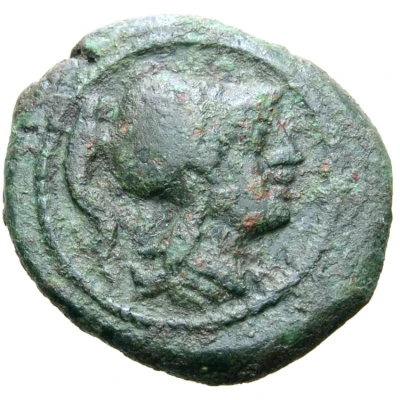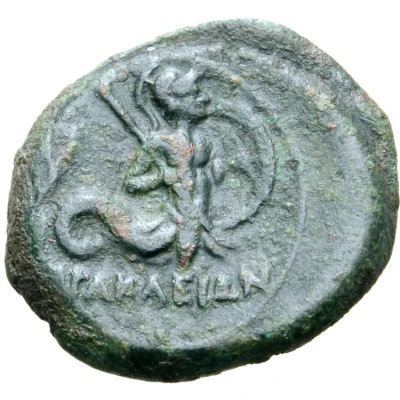


© Roma Numismatics Limited
Æ17 300 BC - 201 BC
| Bronze | 3.27 g | 17 mm |
| Issuer | Herakleia (Akarnania) |
|---|---|
| Type | Standard circulation coin |
| Years | 300 BC - 201 BC |
| Currency | As |
| Composition | Bronze |
| Weight | 3.27 g |
| Diameter | 17 mm |
| Shape | Round (irregular) |
| Technique | Hammered |
| Orientation | Variable alignment ↺ |
| Demonetized | Yes |
| Updated | 2024-10-09 |
| Numista | N#196574 |
|---|---|
| Rarity index | 100% |
Reverse
Marine deity (Glaukos?) to right, holding spear and shield.
Script: Greek
Lettering: ΗΡΑΚΛΕΙΩΝ
Comment
In Greek mythology, Glaukos was a Greek prophetic sea-god, born mortal and turned immortal upon eating a magical herb. It was believed that he commonly came to the rescue of sailors and fishermen in storms, having earlier earned a living from the sea himself.The coin in the main image (3.27g, 17mm, 6h. Very Fine):
◦ Auctioned by Roma Numismatics Ltd, E-Sale 60, 1 August 2019, Lot 65. Sold for 160 GBP;
Interesting fact
The coin features a unique combination of symbols on its obverse (front) side, including a helmeted head of Athena, a griffin, and a rose. This combination of symbols suggests that the coin may have been issued during a time of political alliance between Herakleia and Athens, as Athena was the patron deity of Athens. The griffin, on the other hand, was a mythical creature often associated with protection and treasure, which may have been included on the coin to symbolize the wealth and prosperity of Herakleia. The rose, which is not commonly found on ancient Greek coins, may have been added to represent the fertility and abundance of the region. Overall, the symbols on this coin provide a fascinating glimpse into the political and cultural context of Herakleia during this time period.